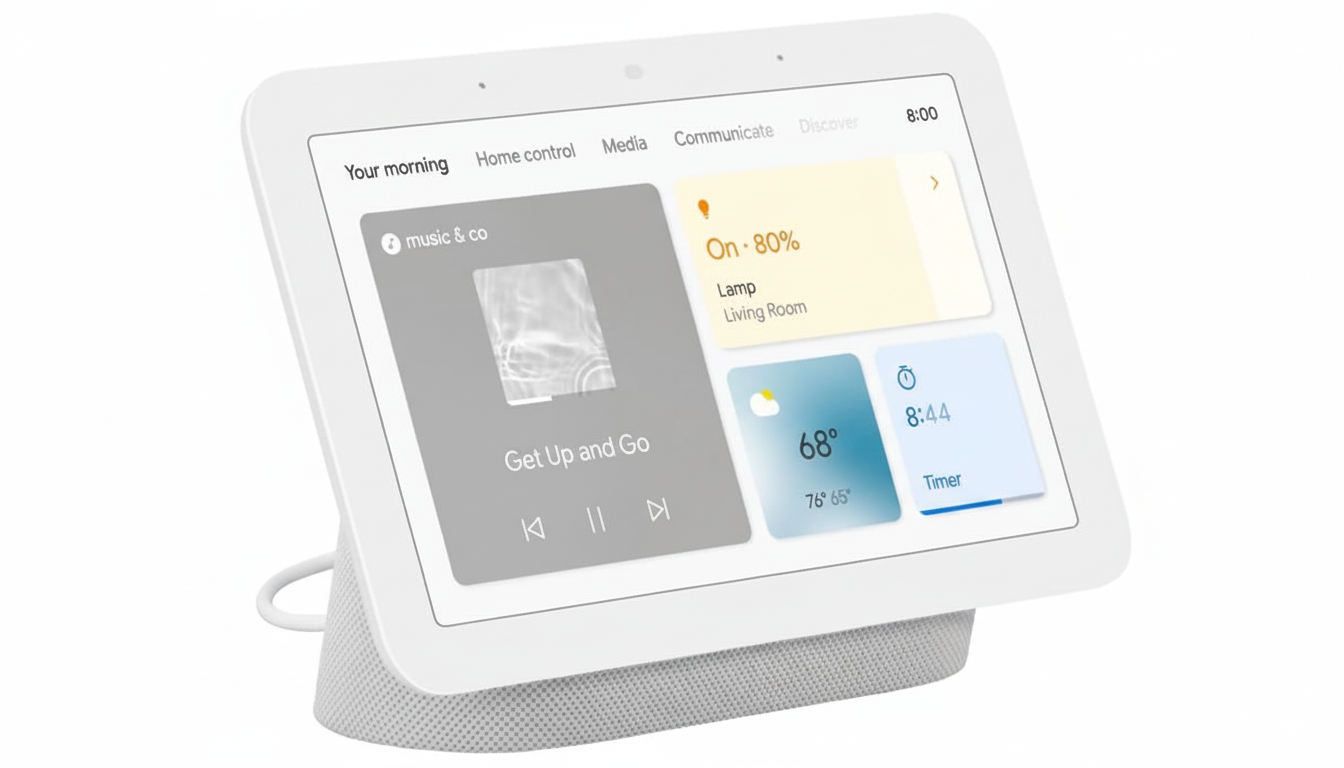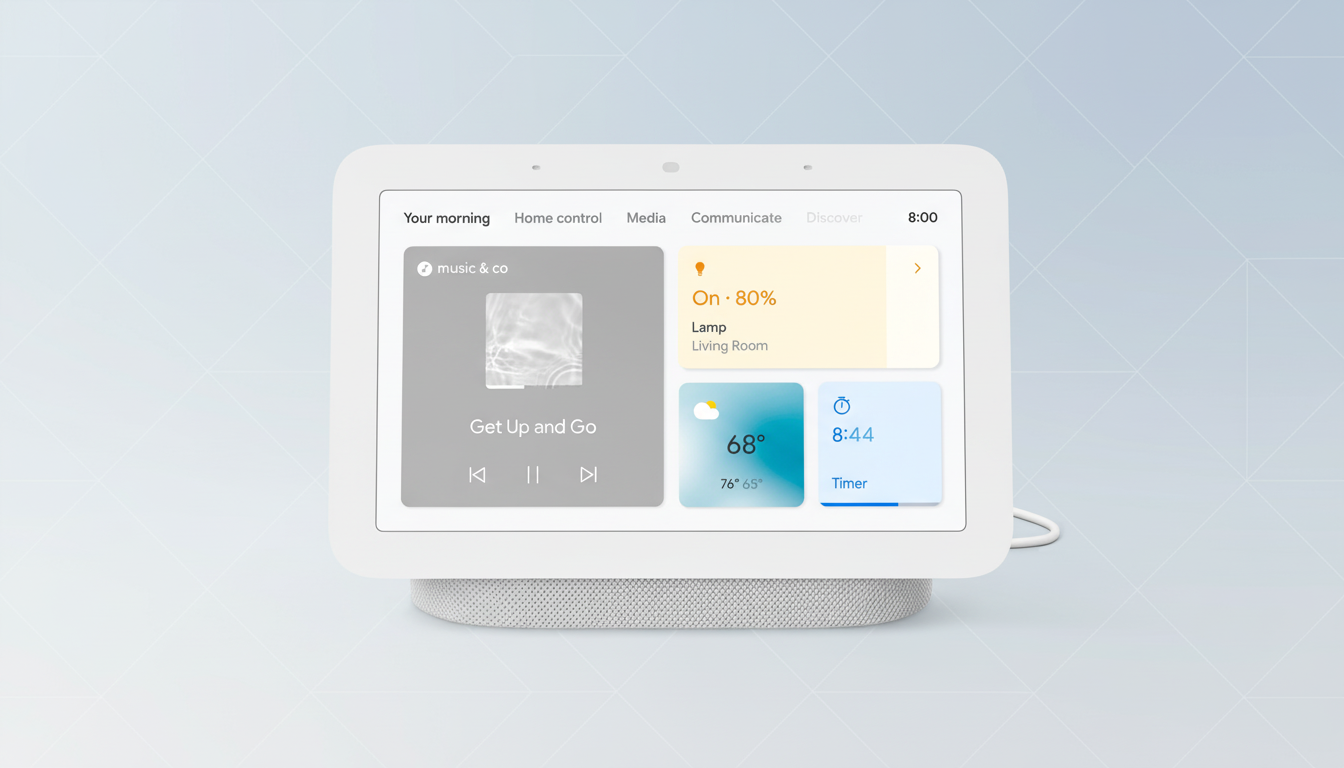Google’s AI in the new decade is coming to a living room near you. The company has started rolling out Gemini to Google Home smart speakers and displays, marking a departure from the old version of Assistant toward a more conversational, generative model. The debut is small in scale, but it represents a first step toward one singular Google voice experience for phones, speakers, and screens.
What’s changing on your Google Home and Nest devices
Gemini will serve as the voice interface on Google Home devices, attempting to handle follow-up questions, complex tasks, and context in a way that Assistant often flubbed.
- What’s changing on your Google Home and Nest devices
- How to get the Gemini update on Google Home devices
- What Gemini brings to the smart home experience today
- The strategy behind Google’s shift to generative assistants
- Privacy and family settings still matter with Gemini
- Key takeaways and what’s next for Gemini on Home

The transition extends back to speakers and smart displays as old as the original Google Home and first-generation Nest Hub, which is significant support for aging hardware.
For real-time, free-flowing conversations with Gemini Live, you will need two things: a compatible device and a paid Home Premium plan, according to Google’s guidance.
Gemini Live is available on:
Wondering if your household has converted? Try a check-in prompt: “OK Google, who are you?” If you still hear “Assistant,” your devices haven’t made the switch.
How to get the Gemini update on Google Home devices
The rollout begins with Early Access registrants.
For starters, you will need the Google Home app version 4.1 and up, and it’s only available in the United States for now. You will receive a notification in the Home app prompting you to begin using Gemini when your account is enabled.
Not ready to take the plunge? You aren’t automatically being placed on Gemini right away. Just keep in mind that if you decide to try the new experience, when and if it launches for everyone, you won’t have an easy toggle to go back to Assistant. If you rely on certain Assistant behaviors or third-party functions, look through the list of features from Google in the Home app before you decide to go all in.
What Gemini brings to the smart home experience today
Gemini has the ability to process less explicit requests that span multiple turns and maintain context and reason across steps.

In practice, that could mean stringing actions and follow-ups together without reiterating yourself: “Dim the living room lights, play a lo-fi playlist, and alert me to move laundry when the TV powers down.” Get ready for fewer dead ends when you refine instructions, such as “warmer than that” or “play something like that.”
On smart displays, Gemini will be able to concoct simplified recipes, call up relevant camera feeds, and draft quick notes or shopping lists with looser language.
For families who also use Routines, Gemini’s generative layer could be a way to make routine building feel less like programming and more of a staccato conversation.
There are trade-offs. Generative AI tends to be more verbose, and early builds might exhibit latency under heavy network load. The best experience is usually found on newer speakers and displays with more robust on-device processors and microphones, but the rollout also includes older models.
The strategy behind Google’s shift to generative assistants
As much as this is about features, it’s also about a platform alignment play. Google has already integrated Gemini across its apps and services; the addition of Home plugs a significant hole. Across the industry, rivals are also moving in similar ways: Amazon recently previewed an LLM-powered Alexa experience, and Apple has detailed greater on-device smarts for Siri. The smart home, it seems, is the next battleground for generative AI assistants.
Analysts at research and marketing firms, like Canalys and CIRP, have observed that the smart speaker revolution has leveled off, and growth of the product category has begun to slow since its earlier explosion. Adding generative AI might breathe new life into the category by making assistants capable in everyday tasks — a little less command-and-control, a little more working it out alongside you.
Privacy and family settings still matter with Gemini
If you run a household full of shared devices, dig into Voice Match, Digital Wellbeing settings, and kid profiles after you turn on Gemini. Check how your voice recordings are stored and whether your activity makes models better. Like any assistant switch, you’ll want to re-test essentials — door locks, thermostat control, and access to cameras — before counting on them.
Key takeaways and what’s next for Gemini on Home
As a first step, Gemini is launching to Early Access customers on Google Home in the US, said Pretner, with more releases planned over the next few weeks. You’ll have to be on the latest Home app, and if you want real-time Gemini Live chats, budget for a Home Premium subscription and a supported Nest device.
The upshot: Gemini aims to offer a more natural, authentic voice experience on speakers and displays in smart homes. If you’re eager to test things out, watch for the Home app prompt — and if you’re cautious, continue using Assistant while the new service matures. Either way, the future of Google’s smart home now talks Gemini.

